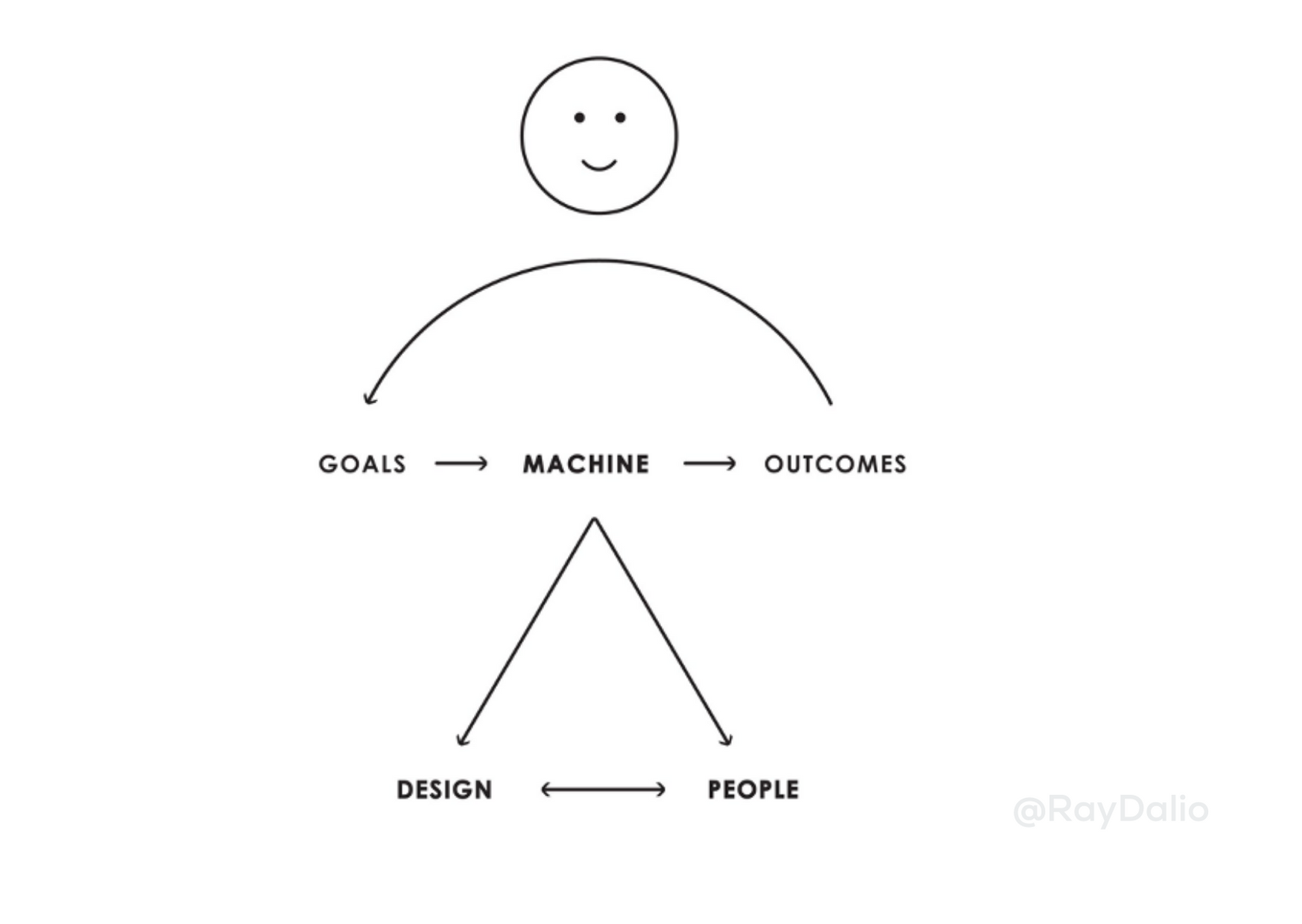I love this image from @RayDalio. He uses it to depict ‘higher level thinking’, the ‘ability to rise above your own circumstances and objectively look down.’ He also describes higher level thinking as the ‘ability to study and influence the cause-effect relationships at play and use them to get the outcomes you want.’

It’s hard making the jump from team member to team leader. For me, the challenge is always to get out of the weeds, to step back from seeing myself as worker within the machine to being a designer of the team. This comes a little easier when I lean on agile ceremonies such as retrospectives, and our quarterly/monthly OKR planning cycle to be able to ‘look down’. These macro moments in our regular cadence elevate my perspective so I can tweak the necessary practices to uplift our team performance. This also helps us all to better own our outcomes. We all have the ability to alter your machine to produce better outcomes. The hardest part though comes to ‘objectively look down’.
My bias is my greatest enemy, and best teacher. I project optimism bias, recruitment bias, unconscious bias…and I’m sure whatever other categories of bias that may exist. There’s more to come on this topic from me. Needless to say however that bias is what most often clouds my objectivity when looking into the machine to analyse and decide on where we can continuously improve to get ahead and deliver software predictably and confidently.
The biggest mistake teams make is not viewing themselves objectively. It leads them into bumping into their own weaknesses over and over again. It perpetuates the feeling of being on the treadmill. They feel a sense of loss of control and confidence that comes from being reactive. Teams will never get ahead if this their way of being in the machine.
Effective teams consciously build a practice that gives them a ‘high-level’ view. They elevate themselves as workers within the machine by creating time to reflect ‘on’ the machine, collectively as co-designers. They are clear on their goals and roles to get there. They know the steps within their continuous feedback loop and embrace iterative improvements. A measurement system identifying a core set of metrics that provides real-time insights into their practices feeds decisions on what practices require improvement. Several metrics are reviewed in parallel to cross-check and spot when practices may be gamed. Trends are referenced to identify patterns over many time periods rather than just a single short-term frame. Effective teams know they are accountable for constantly refining their machines to produce better outcomes.
You have your goals. The way you practice and operate as a team to achieve your goals is your machine. It consists of design (the things that have to get done) and people (who will do the things that need getting done). For example, our goal is to ship product that delights our customers. The design for Umano’s machine includes a data scientist, user experience designer, product manager, front end engineers, back end engineers, a tester and so on. Our design also nominates a code, a way of working such as Agile Scrum to keep everyone in synch. While the right design is essential, it’s equally important to put the right people into these positions, and ensure they have the required values, skills and experience to do their jobs well.
Continuous improvement comes when you can go above yourselves and take the high-level view. With a growth mindset, you’ll be able to iterate your way into your best performances yet as a team. You’ll build the confidence and track record to get virtually anything you want by better aligning expectations with you stakeholders.
By owning your machine, you own your outcomes.
How objectively are you looking into your machine?
What is your data teaching you?
As a team leader for agile delivery teams, you get to design the machine that will set your continuous improvement practices up for success. Design well!
Umano is on a mission to help self-managed agile delivery teams succeed through analytics and automated assistance. It works where you work, so you can build better teams.
Sign up here to access your complimentary Umano account and see how your team’s agile sprint practices are tracking.
